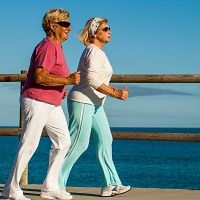Article
Vibration: The Tremor that Builds Bone
Author(s):
Dynamic physical activity and weight-bearing exercise are crucial to good bone health. Can we recreate musculoskeletal loading's anabolic effects in frail individuals who cannot exercise?

The musculoskeletal system is a little finicky. Exercise regularly and it stays healthy. Restrict mobility in any way, and muscles weaken and bones thin. Dynamic physical activity and weight-bearing exercise are crucial to good bone health. Can we recreate musculoskeletal loading’s anabolic effects in frail individuals who cannot exercise?
That’s the question researchers at the University of North Carolina, Chapel Hill, asked recently. Their approach—use of mechanical signals that would be self-targeting and self-optimizing rather than systemic drugs—is addressed in a new review. This article appears in the December 2014 issue of Current Opinion in Endocrinology, Diabetes, and Obesity.
These researchers worked from the theory that vibration therapy is a nonpharmacological analogue of physical activity that can promote bone and muscle strength. Studies in both animals and humans suggest that high-frequency, low-magnitude vibration therapy increases bone formation and decreases bone resorption. The outcome: better bone strength. It may also correct sarcopenia, which confounds skeletal fragility and creates a risk for falls through stimulation of mesenchymal stem cells.
Many studies have been conducted that look at vibration as a tool for bone building. To date, they haven’t established the most effective intensity, frequency, and duration of vibration treatments. More studies are also needed to investigate its use in combination with physical/exercise and pharmacological therapies.
Study of vibration therapy is confounded by the number and types of devices. Depending on the specific device used, patients receive different directionality (horizontal displacement from side-to-side or vertically), amplitudes (displacements resulting in gravitational force from less than 1 to greater than 15g), and frequency (5—90 Hz) of vibration.
Most work has been done in low-intensity (<1g) treatments. Researchers are looking at high-intensity vibration to determine if its benefits outweigh its risks.
In children with immobilization-associated disability, vibration therapy appears to stimulate a more pronounced anabolic effect, possibly due to stimulation of osteogenesis. Children have a larger pool of mesenchymal progenitor cells than adults do.
Low-magnitude mechanical signals may represent an exercise surrogate for patients who cannot exercise.





